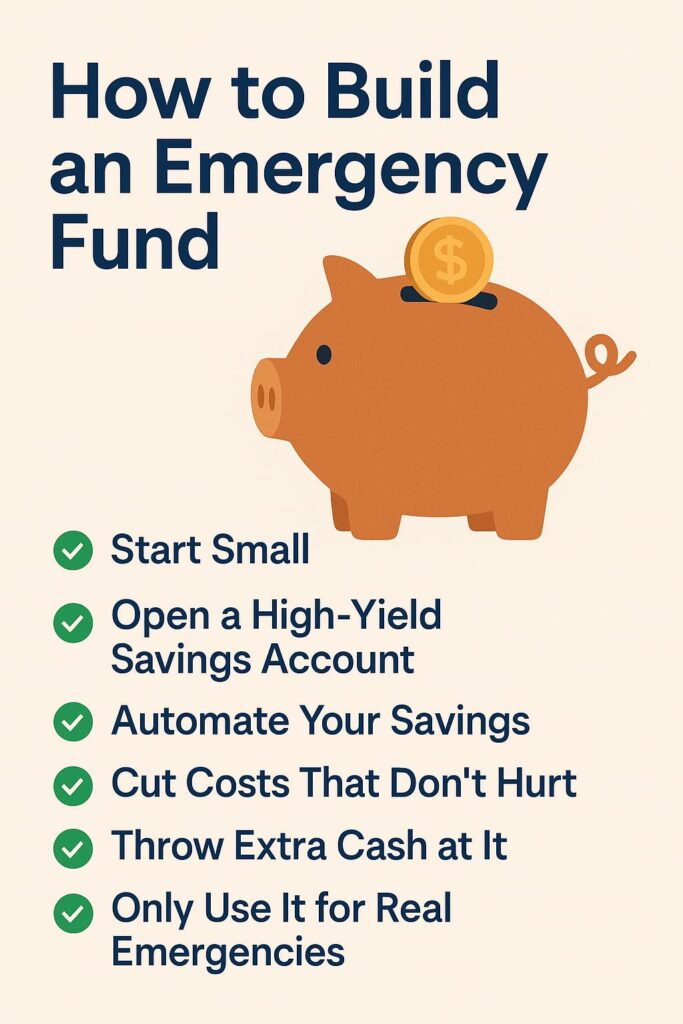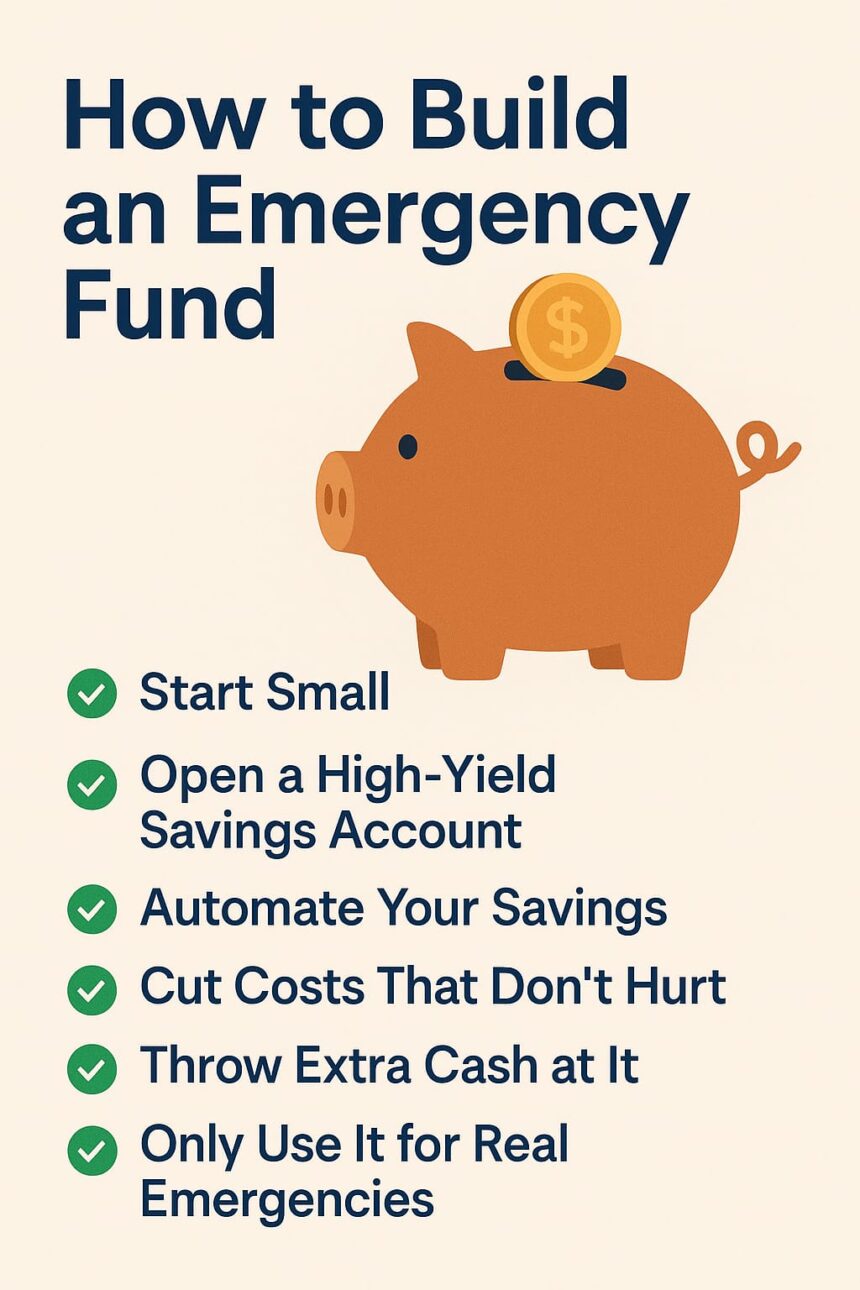
Keywords: emergency fund, how to build an emergency fund, saving money, personal finance tips, beginner budgeting, financial safety net
Why You Need an Emergency Fund:
Even If Money’s TightLet’s be real — life doesn’t ask for permission to throw chaos your way. Job loss. Medical bills. Car repairs. Stuff happens.And when it does? Your emergency fund steps in to save the day.
An emergency fund is your financial safety net — cash set aside specifically for unexpected expenses. It’s the difference between staying calm or swiping your credit card and hoping for the best.
You don’t need to be rich to start one. You just need a plan. Here’s exactly how to build an emergency fund — no stress, no guilt, and no skipping coffee.
🛠️ Step 1: Start Small —
Like, Really Small
Most blogs shout about saving $10,000. Let’s bring it back to Earth.
🎯 Your first goal? Just $500.
Then shoot for $1,000. Eventually, try to save 3–6 months of essential expenses, but don’t worry about that yet.
Think: “What would get me through a basic emergency this month?” That’s your starting line.
🏦 Step 2: Open a High-Yield Savings Account
Do not keep your emergency cash in the same checking account you use for everyday spending. It’ll vanish.
Instead, open a separate high-yield savings account at an online bank — most pay 4–5% APY right now. Your money earns interest and stays out of sight.
Top options in the U.S.:
Ally Bank
SoFi
Capital One 360
Marcus by Goldman Sachs
Discover Online Savings
🔐 Out of sight = harder to spend = more saved.
⚙️ Step 3: Automate Your Savings (So You Don’t Think About It)
Set up an automatic transfer to your emergency fund each payday — even if it’s just $20/week.
📈 Example: $20/week = $1,040/year — without even noticing.
Automating builds the habit for you. No budgeting drama, no “oops, forgot.”
✂️ Step 4: Cut Costs That Don’t Hurt
No need to live like a monk. Just trim stuff you don’t actually value.
Smart cuts Americans make:
Pause unused subscriptions
Switch car insurance (shop quotes!)
Pack lunch 2–3 days a week
Lower your phone bill (Mint Mobile, Visible, etc.)
These changes free up real cash — without crushing your lifestyle.
🎁 Step 5: Throw Extra Cash at It
Got a tax refund, birthday gift, side hustle payout, or small bonus?
Stash a portion into your emergency fund before the money disappears.
💡 Rule of thumb: Save 20%, spend 80% guilt-free.
🚨 Step 6: Only Use It for Real Emergencies
This isn’t your “bored-on-a-Saturday” fund.
Real emergencies:
Job loss
ER visit
Furnace breaks in January
Vet bill for your dog eating socks again 🐶
Not emergencies:
Concert tickets
Holiday sales
Spontaneous weekend trips
Stay disciplined — this fund is your backup parachute, not a gift card.
🏁 Step 7: Track Progress & Celebrate
Set milestones: $500, $1,000, $3,000, etc. And when you hit them? Celebrate.
Not by blowing your savings, but by acknowledging your win. You’re doing something most Americans struggle with — building real financial security.
✨ Bonus tip: Use a savings tracker or free app like Mint, Monarch, or Rocket Money to stay motivated.













